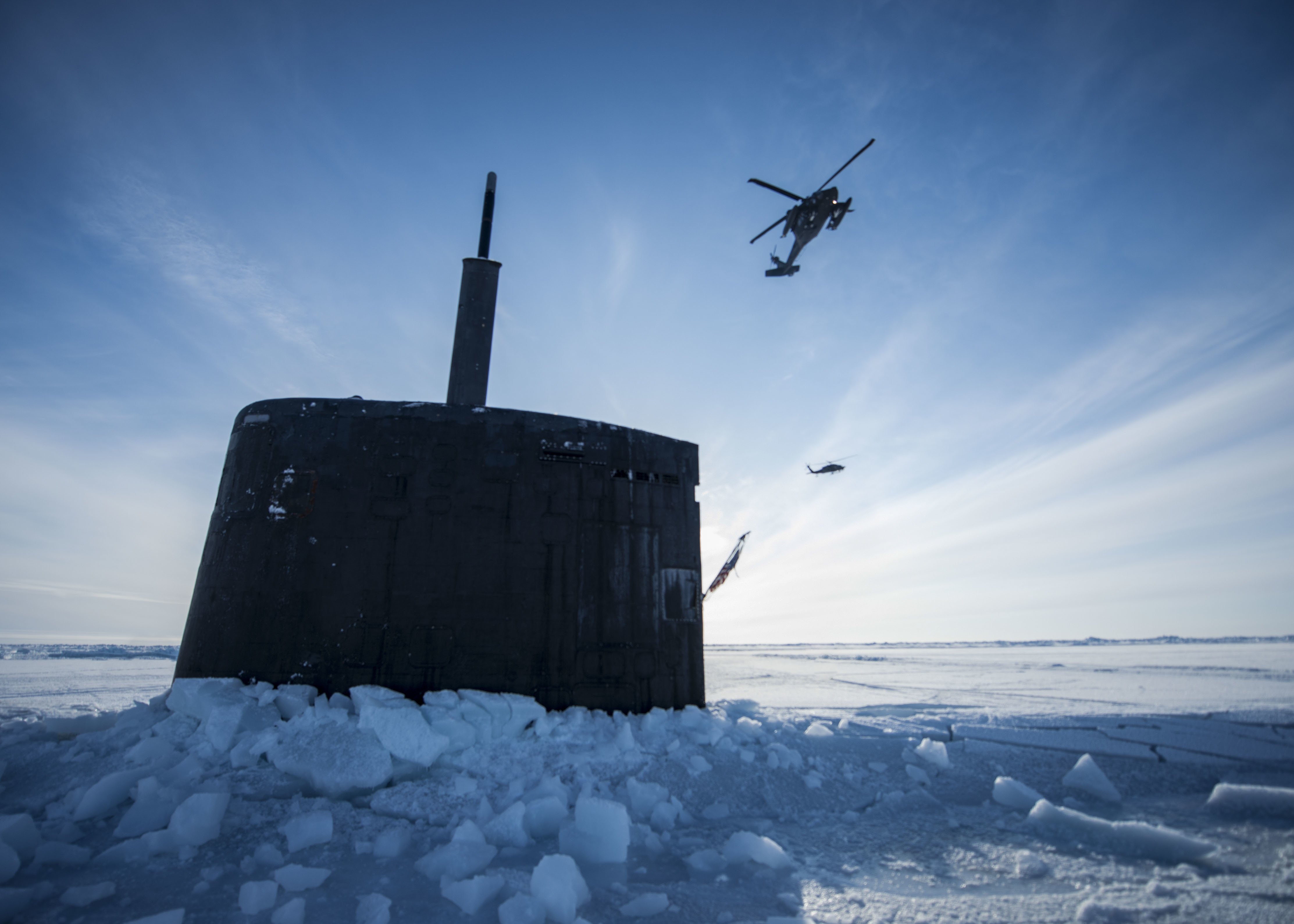
U.S. submarines are in the Arctic to deny a bastion to Russia to attack the United States, but the probability of adding surface warships to the region in the near future as another maritime deterrent is slim, a Navy policy official said Tuesday.
Logistics is the limiting factor of operating surface ships in the Arctic, said Jeffrey Barker, deputy branch head for policy and posture on the chief of naval operations’ staff (OPNAV N515B), speaking at the Wilson Center in Washington, D.C.
The tyranny of distance is also a consideration in stationing military ships or commercial vessels so far north, said Michael Powlowski, chief of staff for Sen. Lisa Murkowski (R-Alaska). Ports could be hundreds of miles away from ships operating in the region.
Retired Coast Guard Commandant Adm. Paul Zukunft said suggested a wide-ranging private -public partnership could be a way forward to meeting both civilian and military needs in port development in Alaska.
“It’s very, very expensive,” Barker said of building facilities in that environment, so private help would be of great assistance. “[But] the [chief of naval operations] wants us to think in terms of decades” when it comes to planning for Arctic operations, missions and stationing.
For example, when Navy Secretary Richard Spencer asked for cost estimates to return a Navy presence to Adak, an island in the Aleutians off the Alaskan coast, the figure came back at $1.3 billion.
The Air Force is expanding its presence by moving F-35A Lighting II Joint Strike Fighters to complement its fleet of F-22s and F-16s already stationed at two large installations in Alaska, Iris Ferguson, a senior advisor to the Air Force, said at the event. The move would mean new facilities and the stationing of up to 10,000 airmen to the region.
The Air Force “is still the predominant service” under the Department of Defense in the region, Iris Ferguson, a senior advisor to the Air Force, said. The move would mean new facilities and the stationing of up to 10,000 airmen to the region and is updating with Canada radar tracking stations for aircraft and missiles.
Coast Guard Commandant Adm. Karl Schultz said his service”must have the tools” to assert U.S. presence in its territorial waters. For the region, that means icebreakers, where Russia has more than 40, and China has three, and the United States only has two.
In addition, Russia is modernizing its military installations to enforce its territorial claims on the Northern Passage as well as deploying cruise-missile carrying corvettes capable of operations in Arctic waters.
China not only has the shipbuilding capacity and now experience in building icebreakers and other vessels such as liquid natural gas transports to operate in the Arctic, but it is now training crews for these operations in expectation of longer sailing seasons due to climate change.
Zukunft, who in his tenure as commandant laid the groundwork for the rebuilding of the icebreaking fleet, said the need for presence was critical. He said that he had to turn down a request for the 40-plus-year-old heavy icebreaker USCGC Polar Star (WAGB-10) to conduct a freedom of navigation operation in the Arctic for fear the ship would break down and the U.S. would have to ask the Russians to tow it to port for repairs.
Earlier, he cited how the Russians provided an icebreaking petroleum tanker to provide fuel to Nome, Alaska, in 2011. The Coast Guard’s medium icebreaker USCGC Healey (WAGB-20) led the way into the port. The reality was the United States had no ship capable of making the delivery in the emergency.
That first icebreaker cutter would replace Polar Star, but it likely would be sent to the Antarctic to support missions there, he added, Schultz.
Schultz said later this week he will unveil the Coast Guard’s updated Arctic strategy at the National Press Club.
Ferguson and Barker also said their services are updating their Arctic strategies and expect to deliver unclassified versions of them early next year.





